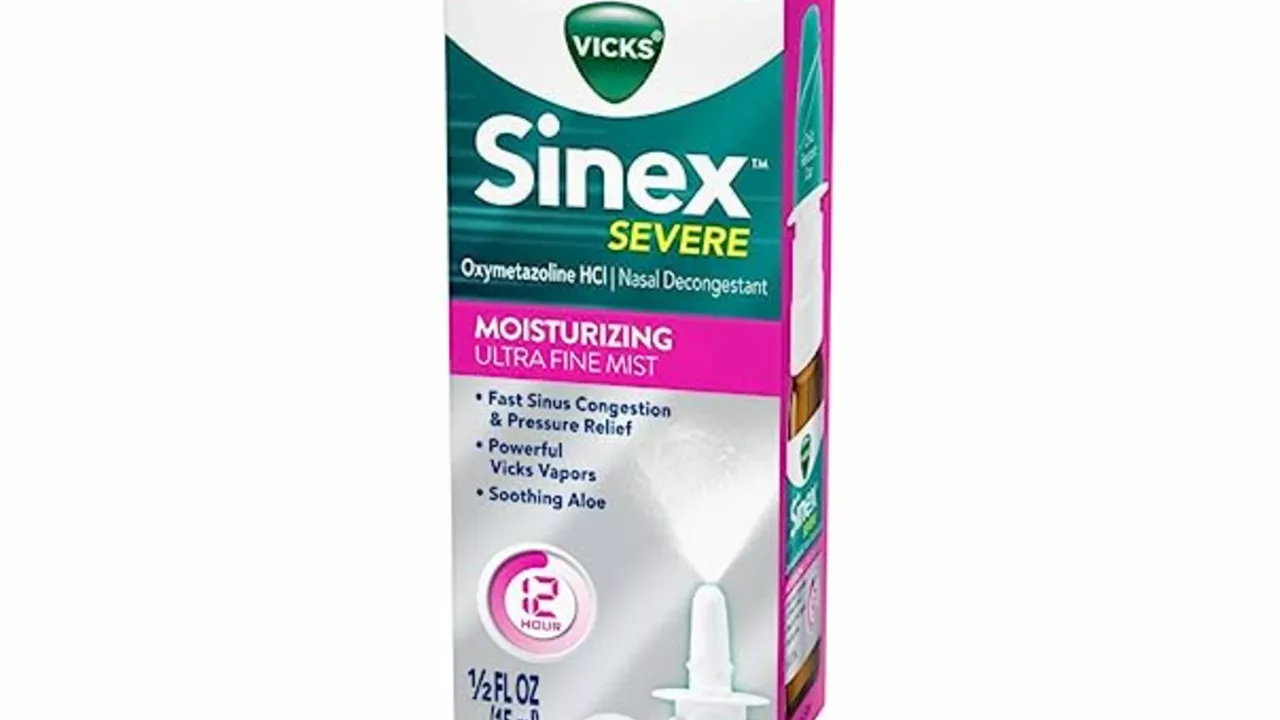Oxymetazoline Hydrochloride: Quick Guide to Uses, Dosage & Safety
If you’ve ever reached for a pink spray bottle during a cold, chances are it contained oxymetazoline hydrochloride. This tiny chemical is the main ingredient behind many over‑the‑counter nasal decongestants and some eye drops. It works fast, shrinks swollen blood vessels in your nose, and clears that stuffy feeling in minutes.
How It Works and Common Uses
Oxymetazoline is an alpha‑adrenergic agonist. In plain English, it tells the tiny muscles around your nasal passages to tighten up, which reduces swelling and opens up airflow. That’s why you’ll see it in products like Afrin, Dristan, and generic sprays. It’s also used in eye drops for redness because the same vessel‑constricting action clears the whites of your eyes.
Most people use it for short‑term relief from colds, sinus infections, allergies, or even a hangover‑related stuffy nose. The usual dosage is one to two sprays per nostril every 12 hours, never more than three days in a row. Going beyond that can cause rebound congestion – the exact opposite of what you want.
Safe Use Tips and What to Watch Out For
Here’s the practical part: always read the label, keep track of how many times you spray, and set a reminder if you tend to forget. If you have high blood pressure, heart disease, or are pregnant, check with a pharmacist before using it. Side effects are usually mild – a dry nose, slight burning, or temporary dizziness – but serious reactions like fast heartbeat or severe headache need medical attention.
Don’t share your spray with anyone else, especially kids. Children under six should avoid oxymetazoline unless a doctor says otherwise. If you experience rebound congestion after three days of use, stop the spray and switch to saline rinses or a different class of decongestant.
Interactions are rare because it’s a topical product, but using other nasal meds at the same time can irritate the lining. Also, avoid alcohol if you feel light‑headed after a dose – the combo can amplify that sensation.
Bottom line: oxymetazoline hydrochloride is a handy tool for quick nasal relief when used correctly. Stick to the recommended dosage, limit use to under three days, and you’ll keep your sinuses clear without nasty side effects. Got more questions? Our Drugs‑365.com database has detailed drug interactions, user reviews, and the latest news on over‑the‑counter decongestants.

The Role of Oxymetazoline Hydrochloride in Addiction Recovery
In my exploration of addiction recovery methods, I came across a somewhat surprising player - Oxymetazoline Hydrochloride. Commonly found in over-the-counter nasal sprays, this compound has been identified as a tool in combating opioid addiction. It works by managing withdrawal symptoms, making the recovery period more bearable for patients. Its use, however, is not without controversy, as it too can be addictive if misused. Therefore, monitoring and control of its use are crucial during the recovery process.